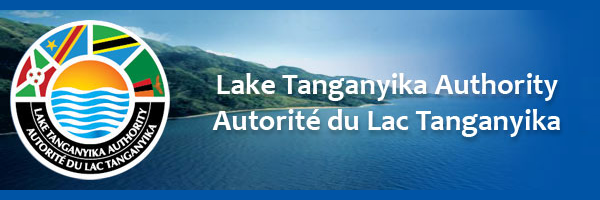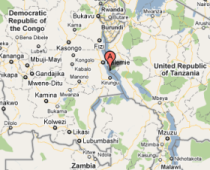The invasive Mimosa pigra is extending its range in the Lake Tanganyika ecosystem

What is an invasive species?
An invasive species is an animal or plant which is introduced into a new area where it does not occur naturally. If the introduction occurs without the accompaniment of its pests and diseases that keep the species in check (under control) in its natural range and if it is able to survive, establish and spread thus causing damage to biodiversity, peoples’ livelihoods or development, it is called “invasive”.
Definition of Mimosa Pigra
Mimosa Pigra, the giant sensitive plant, is a prickly leguminous shrub that can reach up to 4m in height. It originates from tropical South and Central America but has been in Africa for at least 200 years. It has long brown woody stems that branch from the base and which bear many sharp, curved thorns. The leaves are soft, green, finely-pinnate and fold inwards when touched (hence the name “sensitive plant”). The flowers are balls of stamens usually pink or mauve, sometimes almost yellow in colour. The fruits are clustered pods, with a furry brown coating of small plant hairs, which break up into small sections (with one seed in each) when they mature. This plant has gradually become invasive in wetlands, lake and river edges and floodplains across Africa – during the last 30 to 40 years and continues to spread and invade.
Impacts of Mimosa pigra
- Mimosa pigra is known to cause extensive damage to local vegetation by displacing native vegetation while forming a single species thicket which can be impenetrable to people and most animals;
- Mimosa pigra can diminish grazing/pastoral lands especially floodplains and reduces habitat diversity for wild animals and plants;
- It can block waterways with impacts on transport and fisheries and can prevent peoples’ access to both aquatic and terrestrial habitats;
- Tourism is at times affected when this plant invades protected areas and wildlife can be excluded from their feeding grounds by Mimosa pigra invasions;
- Mimosa pigra can also affect water flow in natural streams and irrigation canals and is very difficult to remove in the long-term.
 How does it spread?
How does it spread?
-
The seeds are readily spread be floating on water and being swept away by currents – in streams and floodplains;
-
The seedpods adhere to clothing and coats of mammals (including cattle and small stock) and feathers of birds and can thus spread far and wide;
-
The seeds and pods can also stick onto vehicle tyres facilitating their spread – by cars, farm vehicles and earth-moving machinery.
Why should we be concerned?
Mimosa pigra, despite being present in Africa for possibly two centuries, has only recently begun to spread and become invasive. This may possibly be due to the recent arrival of soil micro-organisms from its original area that allow it to grow faster. But, whatever the reason, it is becoming a problem in almost every country in Africa – through invasion and changing the vegetation and uses of wetlands, lakes and rivers in many places. It is thus a threat to the coasts, wetlands and inflowing waters of Lake Tanganyika in all four riparian countries – which is a concern for the Lake Tanganyika Management Authority and the four countries concerned (Burundi, DRC, Tanzania and Zambia).
 How can it be controlled?
How can it be controlled?
-
Before thickets are established, isolated plants can be managed by mechanical removal through slashing, excavation of roots and burning. The method is very labour-intensive and may stimulate seed germination due to the removal of seed coats.
-
Herbicides may be used with subsequent sowing of competitive plants to suppress regeneration from seed; aerial spraying may be needed when the height and density of Mimosa pigra hinders acces;
-
Biological control is the most cost effective and long-term control strategy for Mimosa pigra and there is a range of biocontrol agents available which have been used in Asia and Australia.
-
A more integrated plan combining mechanical, chemical and biological control may result in quicker and more effective management results to reduce an invasion and prevent its spread.
IUCN Global Invasive Species Initiative - IUCN ESARO Regional Office, Nairobi, Kenya.
For more information: contact: info@lta-alt.org or geoffrey.howard@iucn.org or esther.abonyo@iucn.org
Document Actions













